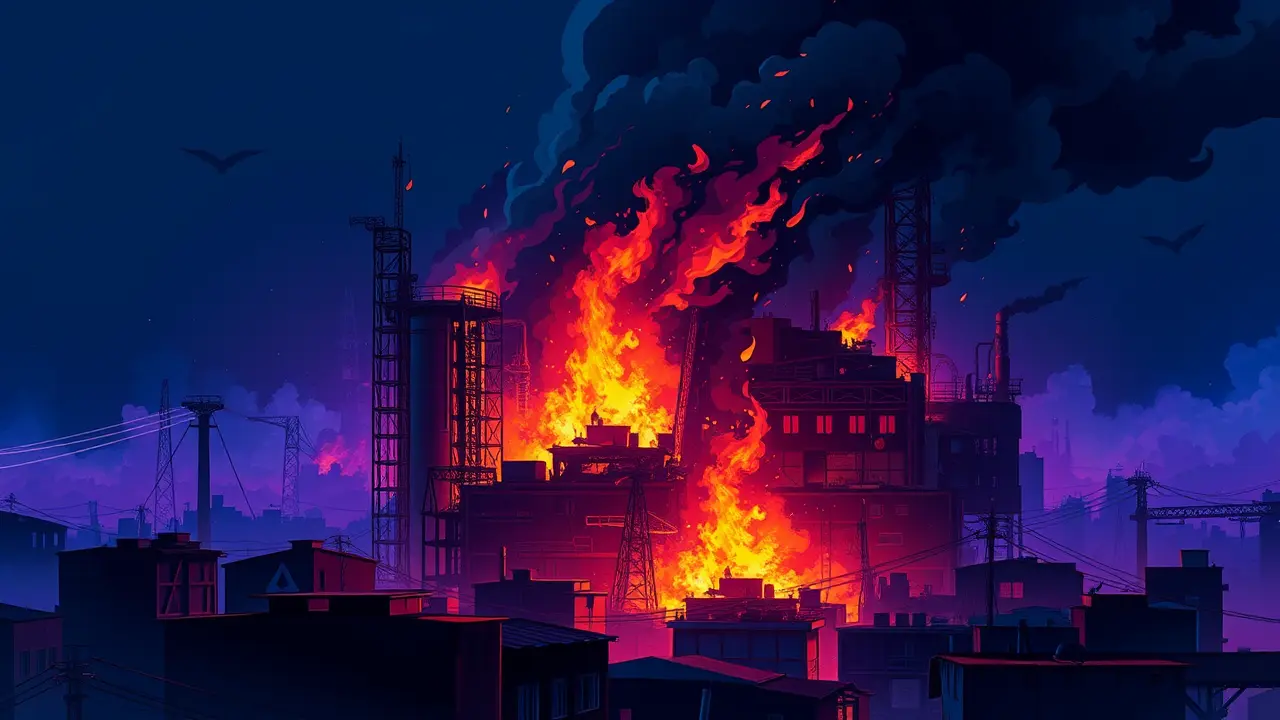Industrial Fire Kills Nine in Bangladesh Capital
The acrid scent of burning chemicals and fabric hung heavy over Dhaka this Tuesday, a grim olfactory signature of yet another industrial catastrophe as a ferocious blaze erupted simultaneously within a garment factory and an adjacent chemical warehouse, claiming at least nine lives and leaving one critically injured, with officials grimly warning the death toll is almost certain to climb. Fire service director Tajul Islam Chowdhury, his voice strained with the fatigue of a long and harrowing recovery operation, confirmed the devastating human cost, stating, 'Nine bodies have been recovered from the second and third floors of the garment factory,' a somber announcement that barely captures the frantic, desperate efforts of rescue workers navigating the smoke-choked, unstable ruins.The fire, whose origin on the third floor of the seven-story building remains a terrifying mystery, evokes a chilling sense of déjà vu for a nation whose economic ascent is so tragically and frequently punctuated by such preventable disasters, forcing us to confront the uncomfortable truth that the affordable clothing on our shelves is often stitched with threads of profound human suffering. This is not an isolated incident but a recurring nightmare; one need only recall the 2012 Tazreen Fashions fire that killed 112 or the 2013 Rana Plaza collapse that slaughtered over 1,100, horrific precedents that sparked global outrage and promises of reform, yet here we are again, with workers—often young women seeking a path out of poverty—trapped in a deadly inferno.The proximity of a chemical warehouse, a common and perilous feature in Dhaka's densely packed industrial zones, undoubtedly acted as a catastrophic accelerant, transforming a structural fire into a toxic, explosive deathtrap, raising urgent questions about zoning regulations, safety inspections, and the blatant disregard for basic human security in the relentless pursuit of production quotas and profit margins. While the immediate focus remains on the heartbreaking recovery of victims and providing solace to grieving families, the long-term consequences will ripple through international supply chains, putting Western fashion brands yet again under the microscope for their auditing practices and their complicity in a system that prioritizes cost-cutting over human life. We must ask ourselves, as consumers and as a global community, how many more body counts will it take before the promises of safer factories, living wages, and the fundamental right to work without fear of death are no longer just empty words in a corporate social responsibility report but a non-negotiable reality for the millions who power this multi-billion dollar industry? The flames in Dhaka have been extinguished, but the fire of accountability must burn brighter than ever.
CH
Chloe Miller123k2 days ago
this is just so heartbreaking to see happen again idk when things will actually change tbh
0
